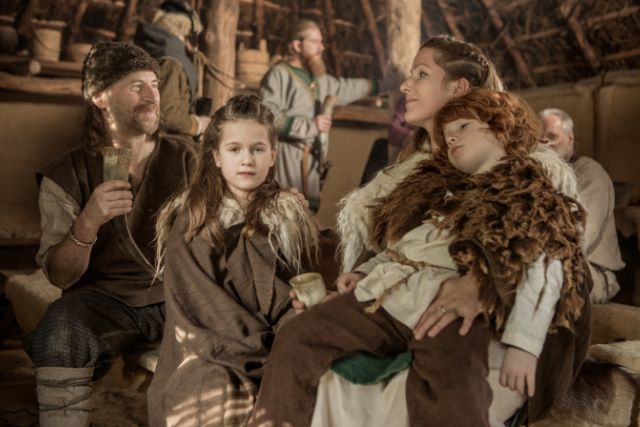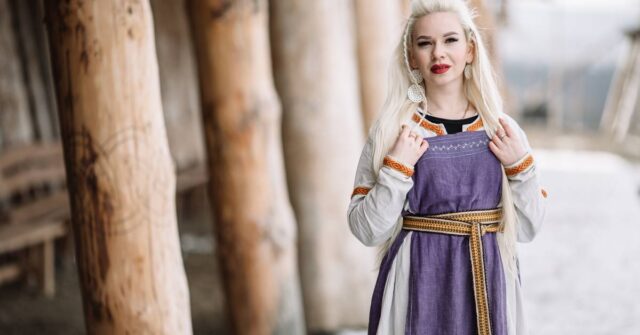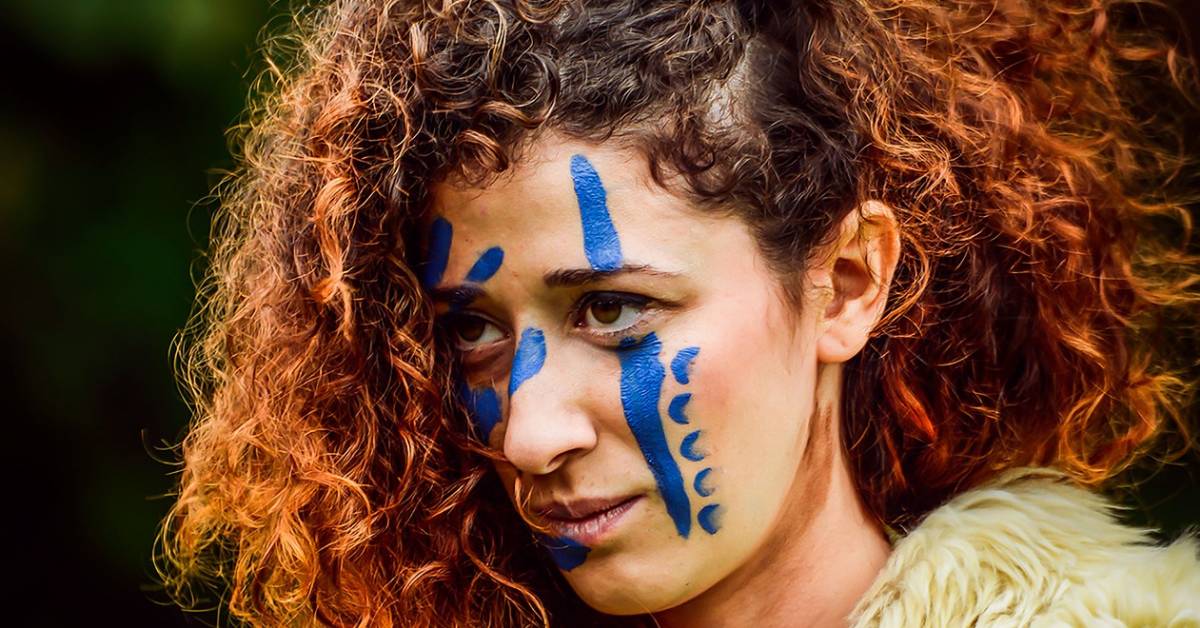In this article, we will delve into the complex and multifaceted world of Viking women, exploring their roles, rights, and responsibilities in Norse society.
We will analyze the historical context, examine their daily lives, discuss their legal status, and highlight notable women in Viking history and mythology. Furthermore, we will consider the archaeological evidence and the modern interpretations of these women.
Introduction
The Viking Age, spanning from the late eighth to early eleventh centuries, was a time of rapid social, political, and cultural change in Scandinavia.
Women played a crucial role in this transformation, as they were not only responsible for managing households and raising children but also took part in agriculture, trade, and religious practices.
This article aims to provide a comprehensive understanding of the roles, rights, and responsibilities of women in Viking culture.


Historical Context
The historical context of women in Viking society provides valuable insights into their evolving roles, rights, and responsibilities during this period.
As we travel back in time, we will examine the roles of women before the Viking Age and how they transformed during this era.
Role Of Women In Pre-Viking Scandinavia
Before the Viking Age, women in pre-Viking Scandinavia held important roles in their communities. They were responsible for the maintenance of the household, the upbringing of children, and the production of textiles, among other duties.
As Scandinavian societies were primarily agrarian, women often worked alongside men in farming and animal husbandry.
Transformation During The Viking Age
As the Viking Age progressed, Scandinavian societies underwent significant changes, including the expansion of trade networks, the development of a warrior culture, and the adoption of Christianity.
These transformations influenced the roles of women, as they became more involved in trade, took on new religious responsibilities, and occasionally participated in warfare as shieldmaidens or warrior women.
Roles Of Women In Viking Society
The roles of women in Viking society were diverse and multifaceted. They encompassed a wide range of social, economic, and religious activities, which were crucial to the functioning and prosperity of their communities.
Let’s delve deeper into these various roles and responsibilities.
Family Life And Marriage
Women in Viking society were primarily responsible for maintaining the household and ensuring the well-being of their families. Marriages were often arranged for political or economic reasons, and women were expected to be loyal and supportive wives.
However, Viking women could initiate divorce if their husbands failed to fulfil their obligations, such as providing for the family or treating them with respect.
Childbirth And Child Rearing
Childbirth was a crucial aspect of a woman’s life in Viking society, as the survival of the family lineage depended on producing offspring.
Women were responsible for raising their children, teaching them social norms, and providing them with the necessary skills for adulthood. This included educating them in farming, trade, and crafts, as well as instilling moral values and religious beliefs.
Household Management
Viking women were in charge of managing the household, which involved overseeing the daily tasks of cooking, cleaning, and taking care of the family.
They also organized and stored food supplies, as well as managing the production of textiles for clothing and other household items. The efficient management of the household was crucial for the family’s prosperity and social standing.


Agriculture And Animal Husbandry
In addition to their household duties, women in Viking society participated in agricultural activities and animal husbandry. They often worked alongside men by tending to crops, raising livestock, and managing the farm.
Women also played a significant role in the production of dairy products, such as cheese and butter, which were essential sources of nutrition for their families.
Textile Production
Textile production was a vital industry in Viking society, and women were at the forefront of this craft. They spun wool and flax, wove cloth, and created intricate patterns and designs for clothing, household items, and sails for ships.
The quality of a woman’s textile work was a reflection of her skill, dedication, and social status, making it an essential aspect of her identity and role in the community.
Trade And Commerce
Women in Viking society were active participants in trade and commerce. They were involved in the production, sale, and exchange of goods, both within their communities and across vast trade networks.
Some women even travelled with their husbands on trading expeditions, while others managed their own businesses, showcasing their independence and entrepreneurial spirit.
Religion And Rituals
Women played a crucial role in the religious life of Viking society. They participated in religious ceremonies and rituals, often acting as priestesses or völvas (seeresses).
They were responsible for maintaining the sacred spaces in their households and ensuring that the proper rites were observed during important events, such as births, marriages, and funerals.
Women also held a special connection to the female deities in Norse mythology, such as Freyja and Frigg.
Women’s Rights And Legal Status
Understanding the rights and legal status of women in Viking society is crucial for gaining a holistic view of their experiences during this era.
From property and inheritance rights to their standing in marriage and the legal system, Viking women were afforded certain protections and freedoms that were notable for the time.


Property And Inheritance
Viking women had the right to own, inherit, and manage property. Upon marriage, a woman retained ownership of her personal property, known as “mundr.”
In the case of divorce or the death of her husband, a woman could reclaim her property and pass it on to her children. This legal recognition of women’s property rights allowed them to maintain a degree of financial independence and security.
Marriage And Divorce
In Viking society, women had the right to initiate divorce if their husbands failed to fulfil their obligations or mistreated them. Grounds for divorce included physical abuse, infidelity, or failure to provide for the family.
This legal recognition of women’s rights in marriage and divorce demonstrates the value placed on their well-being and autonomy.
Legal Protection And Participation
Women in Viking society were afforded legal protection and the right to participate in legal matters. They could bring cases to court, testify as witnesses, and seek restitution for wrongs committed against them.
This legal recognition highlights the importance of women’s voices and experiences in the administration of justice in Viking society.
Notable Viking Women
Beyond their traditional roles, there were women in Viking society who stood out for their extraordinary achievements or their significant roles in history and mythology.
We will highlight some of these remarkable women who were warriors, political leaders, and völvas.


Shieldmaidens And Warrior Women
Although not the norm, some women in Viking society took on the role of warriors or shieldmaidens. These women were trained in combat and participated in battles alongside men.
Notable examples of warrior women include Lagertha, a legendary shieldmaiden and wife of the famous Viking hero Ragnar Lothbrok, and the Oseberg ship burial, which contained the remains of two high-status women, one of whom may have been a warrior.
Queens And Political Leaders
Women in Viking society occasionally held positions of power and influence as queens and political leaders. They were responsible for the governance of their territories, the negotiation of alliances, and the welfare of their people.
Notable examples include Queen Gunnhild, the wife of King Eirik Bloodaxe, and Aud the Deep-Minded, a powerful chieftainess who settled in Iceland.
Völvas And Seeresses
Völvas, or seeresses, were highly respected women in Viking society who held significant religious and spiritual authority.
They were believed to possess the power of prophecy and were sought after for their wisdom and guidance in matters of life, death, and the future.
The Saga of Erik the Red tells the story of a völva named Thorbjorg, who was consulted by the people of Greenland during a time of crisis, highlighting the importance of these women in Viking culture.
Women In Viking Mythology
Women were not just significant in the societal context but also held prominent roles in Viking mythology. Female deities and characters in Viking sagas often mirrored the roles, strengths, and complexities of women in Viking society.
Let’s explore these mythological figures and their roles.
Female Deities And Their Roles
Women held prominent roles in Norse mythology, as goddesses and powerful beings who governed various aspects of life, death, and the cosmos.
Freyja, the goddess of love, fertility, and war, was a central figure in the Viking pantheon, as was Frigg, the wife of Odin and the goddess of motherhood and marriage.
These deities served as powerful symbols of the various roles and responsibilities of women in Viking society.


Female Characters In Viking Sagas
Viking sagas and poetry often featured strong, independent women who played pivotal roles in the stories they inhabited.
These female characters were skilled in the arts of diplomacy, warfare, and magic, and their stories served to inspire and empower women in Viking society.
Examples include Gudrun from the Laxdæla Saga, who sought vengeance for her husband’s murder, and Brynhild, a Valkyrie and tragic heroine from the Völsunga Saga.
Archaeological Evidence
Archaeological evidence provides tangible links to the past and helps us better understand the roles and lives of women in Viking society.
From grave goods and burial practices to artistic representations of women, these archaeological findings offer fascinating insights into the world of Viking women.
Grave Goods And Burial Practices
Archaeological excavations of Viking burials have provided valuable insights into the lives and roles of women in Norse society.
Grave goods, such as jewellery, textiles, and everyday items, offer a glimpse into the daily lives and responsibilities of these women.
The presence of weapons and horse-riding equipment in some female burials suggests that women occasionally took on roles as warriors or enjoyed high social status.
Art And Craftsmanship
Artistic representations of women in Viking culture, such as carvings, sculptures, and jewellery, provide a window into the perceptions and ideals of femininity in Norse society.
These images often depict women as powerful, assertive figures, emphasizing their importance in Viking culture.
Additionally, the craftsmanship of female artisans, such as textile weavers and metalworkers, can be observed in the artifacts uncovered by archaeologists.
Modern Interpretations And Controversies
Modern interpretations of Viking women have led to a reassessment of their roles, rights, and responsibilities, often sparking debates and controversies.
In this section, we will explore how contemporary scholarship and feminist movements view Viking women and their impact on Norse society.
Reassessing Viking Gender Roles
Recent scholarship has challenged traditional perceptions of Viking gender roles, arguing that women held more power and agency in Norse society than previously believed.
This shift in perspective has led to a greater appreciation for the complexity and diversity of women’s experiences during the Viking Age and the importance of their contributions to the development of Scandinavian societies.


Feminism And The Viking Age
Modern feminist movements have embraced the stories and experiences of Viking women as powerful symbols of female strength, independence, and resilience.
By highlighting the various roles and responsibilities of women in Viking society, as well as their rights and legal status, these movements seek to challenge patriarchal norms and promote gender equality in contemporary culture.
Conclusion
The roles, rights, and responsibilities of women in Viking culture were diverse and multifaceted, encompassing a wide range of social, economic, and religious activities.
From managing households and raising children to participating in trade and warfare, women played a crucial role in shaping the course of Viking history.
As our understanding of these women continues to evolve, so too does our appreciation for their contributions to the rich and complex tapestry of Norse culture.











